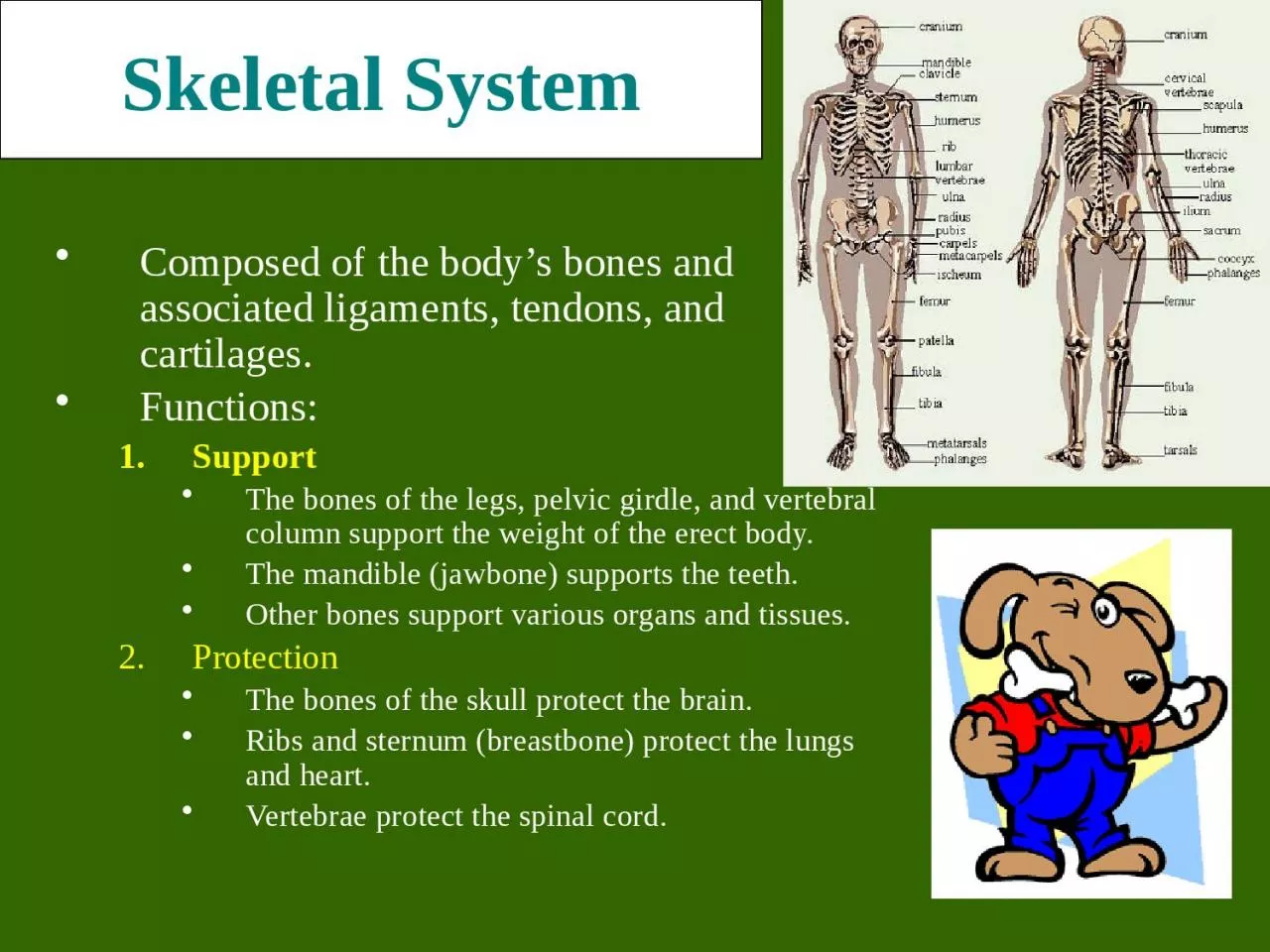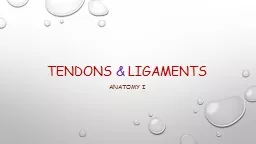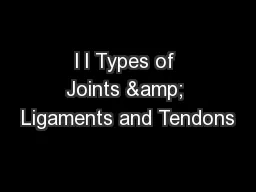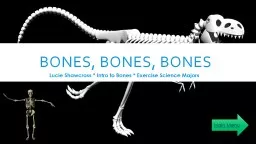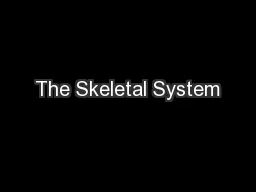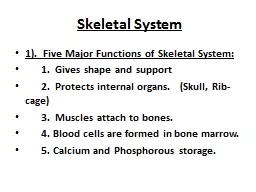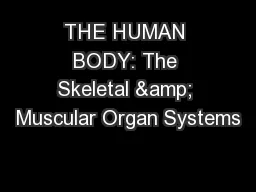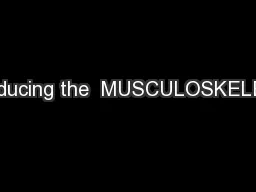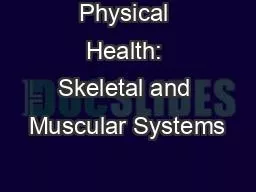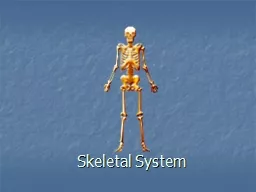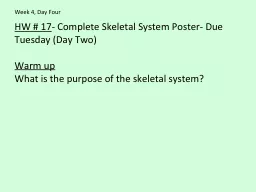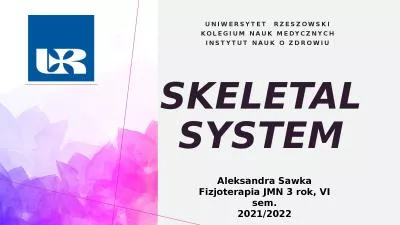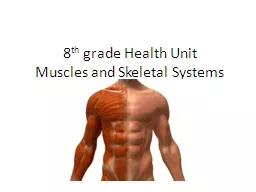PPT-Skeletal System Composed of the body’s bones and associated ligaments, tendons, and
Author : barbara | Published Date : 2024-02-09
Functions Support The bones of the legs pelvic girdle and vertebral column support the weight of the erect body The mandible jawbone supports the teeth Other bones
Presentation Embed Code
Download Presentation
Download Presentation The PPT/PDF document "Skeletal System Composed of the body’s..." is the property of its rightful owner. Permission is granted to download and print the materials on this website for personal, non-commercial use only, and to display it on your personal computer provided you do not modify the materials and that you retain all copyright notices contained in the materials. By downloading content from our website, you accept the terms of this agreement.
Skeletal System Composed of the body’s bones and associated ligaments, tendons, and: Transcript
Functions Support The bones of the legs pelvic girdle and vertebral column support the weight of the erect body The mandible jawbone supports the teeth Other bones support various organs and tissues. Lecture Objectives. Describe the composition of the horse skeleton. Describe the four types of bones. Explain the difference between the axial and appendicular skeleton and describe the composition of each. &. Ligaments. Anatomy I. Ligaments. Add to . the mechanical stability of joints. . Guide . j. oint motion. Prevent excessive motion. . Ligaments. Ligaments link bones together. . Some . very common ones that are . Types of Joints. Joint. : where two or more bones meet. Joints and Movement: . Different joints have varying degrees of movement. Three types of joints. . -. fibrous joints. . -. cartilaginous joints. Lucie Shawcross * Intro to Bones * Exercise Science Majors. Main Menu. Main menu. APPENDICULAR SKELETON. PECTORAL GIRDLE. UPPER BODY 1. UPPER BODY 2. UPPER BODY 3. PELVIC GIRDLE. LOWER BODY 1. LOWER BODY 2. Know the structure and functions of the skeletal system. Know the roles that the skeletal system performs. Functions of the skeletal system. With a partner discuss the functions of your skeleton. How many of the 5 functions can you identify?. 1. Gives shape and support. 2. Protects internal organs. (Skull, Rib-cage). 3. Muscles attach to bones.. 4. Blood cells are formed in bone marrow. . 5. Calcium and Phosphorous storage. . http://kidshealth.org/kid/htbw/SSmovie.html. 1. The Skeletal System provides five major functions which are…. 1. SHAPE & SUPPORT. 2. ENABLES YOU TO MOVE. 3. PROTECTS YOUR INTERNAL ORGANS. 4. PRODUCES BLOOD CELLS &. 5. STORES CERTAIN MATERIALS UNTIL YOUR BODY NEEDS THEM.. . system. . Teachers in Residence . Programme. Andrew Fogarty and Clive Monahan. Musculoskeletal. . System. Bones. Muscles. Muscles. Tendons. Joints and Ligaments. Cartilage. . Bones-Human Skeleton. The Skeletal System . Skeletal System – bones of the body, shields important organs, gives your body shape. Skull protects the brain / Ribs Protect your heart and lungs / Back bone protects your spinal cord. Provides shape and support.. Enables us to move.. Protects your internal organs.. Produces blood cells.. Stores minerals such as calcium and phosphorous.. Bone Formation and Growth. As a baby, most of your skeletal system is made up of cartilage.. Warm up. What is the purpose of the skeletal system?. Week 4, Day Four. Warm up Response . Purpose:. to provide structure and support to the human body. Bones are where new blood cells are generated (in the marrow), and require the mineral . TENDOFORTEpromotesMake innovative product ideas a realityTENDOFORTE can be used in a variety of supplement formats such as bars gels sachets powder jars or shakes gummies and shotsFlyerTENDOFORTEeng 6 KOLEGIUM NAUK MEDYCZNYCH. INSTYTUT NAUK O ZDROWIU. Aleksandra Sawka. Fizjoterapia JMN 3 rok, VI . sem. .. 2021/2022. What is the skeletal system?. . Bones. . Conective. . tissue. . Cartilage. . Joints. Bell Ringer. Pick up and complete the Saved by the skeleton worksheet. . Front and back . Skeletal system. - an internal system made up of bones, joints, and connective tissue. There are . 206 . bones in the body..
Download Document
Here is the link to download the presentation.
"Skeletal System Composed of the body’s bones and associated ligaments, tendons, and"The content belongs to its owner. You may download and print it for personal use, without modification, and keep all copyright notices. By downloading, you agree to these terms.
Related Documents

